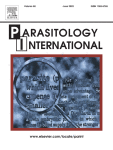Ver ítem
- xmlui.general.dspace_homeCentros Regionales y EEAsCentro Regional Buenos Aires SurEEA BalcarceArtículos científicosxmlui.ArtifactBrowser.ItemViewer.trail
- Inicio
- Centros Regionales y EEAs
- Centro Regional Buenos Aires Sur
- EEA Balcarce
- Artículos científicos
- Ver ítem
Pampas fox (Lycalopex gymnocercus) of the Argentine Pampas as intermediate host for Neospora caninum
Resumen
The Pampas fox (Lycalopex gymnocercus) is the most abundant wild canid from South America. This wild canid inhabits grasslands, open woodlands, and areas highly modified by extensive ranching and agricultural activities. We aimed to evaluate Neospora caninum infection in tissues from the Pampas fox from Argentina. A total of 41 free-living Pampas foxes were sampled in rural areas located in the Humid Pampas region, Argentina. Brain tissue and different
[ver mas...]
The Pampas fox (Lycalopex gymnocercus) is the most abundant wild canid from South America. This wild canid inhabits grasslands, open woodlands, and areas highly modified by extensive ranching and agricultural activities. We aimed to evaluate Neospora caninum infection in tissues from the Pampas fox from Argentina. A total of 41 free-living Pampas foxes were sampled in rural areas located in the Humid Pampas region, Argentina. Brain tissue and different muscles were assessed by histologic and molecular methods. No N. caninum cysts were observed in brain and muscle tissue samples analyzed by histology and immunohistochemistry. Molecular N. caninum identification from brain tissue was based on amplification by PCR of Nc-5 gene and ITS1 rRNA fragments and subsequent sequencing. The presence of N. caninum DNA was 74% (23/31) for the Nc-5 gene and was confirmed by a second ITS1 PCR in 55% (17/31) of the brain tested. Thirteen ITS1 consensus sequences were obtained, and all have a 99.58–100% similarity with N. caninum reference sequences. Only 4% (1/23) of muscles samples analyzed were positive for the Nc-5 gene of N. caninum. This study demonstrated a high prevalence of N. caninum DNA in brain from free-ranging Pampas fox of the Pampa Argentine, thus confirming that this wild canid is a wide distributed intermediate host.
[Cerrar]

Autor
Scioscia, Nathalia Paula;
Hecker, Yanina;
Arranz Solís, David;
Pedrana, Julieta;
Urtizbiria, Facundo Nahuel;
Campero, Lucia Maria;
Olmos, Leandro Hipolito;
Scioli, Maria Valeria;
Dorsch, Matías;
Fiorani, Franco;
Cheuquepan Valenzuela, Felipe Andres;
Denegri, Guillermo María;
Moré, Gastón;
Moore, Prando Dadin;
Fuente
Parasitology International 88 : 102549 (june 2022)
Fecha
2022-03-03
Editorial
Elsevier
ISSN
1383-5769
Documentos Relacionados
Formato
pdf
Tipo de documento
artículo
Proyectos
(ver más)
INTA/2019-PD-E5-I105-001/2019-PD-E5-I105-001/AR./Patógenos animales: su interacción con el hospedador y el medio ambiente. Impacto en productividad, ecosistemas, sanidad animal y salud pública en el marco “Una Salud”
Palabras Claves
Derechos de acceso
Restringido
 Excepto donde se diga explicitamente, este item se publica bajo la siguiente descripción: Creative Commons Attribution-NonCommercial-ShareAlike 2.5 Unported (CC BY-NC-SA 2.5)
Excepto donde se diga explicitamente, este item se publica bajo la siguiente descripción: Creative Commons Attribution-NonCommercial-ShareAlike 2.5 Unported (CC BY-NC-SA 2.5)

